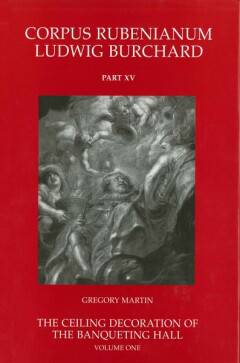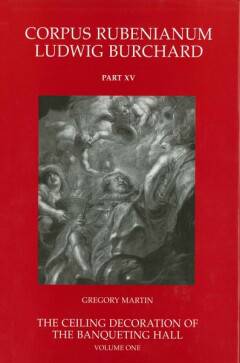
- Afhalen na 1 uur in een winkel met voorraad
- Gratis thuislevering in België vanaf € 30
- Ruim aanbod met 7 miljoen producten
- Afhalen na 1 uur in een winkel met voorraad
- Gratis thuislevering in België vanaf € 30
- Ruim aanbod met 7 miljoen producten
Zoeken
Omschrijving
Rubens's nine paintings in the ceiling of the Banqueting Hall, in Whitehall, London, provided the main decoration of this magnificent room, which was the focal point of Stuart Court ceremonial. Commissioned by King James I and his son, the future Charles I, following the destruction of the early Jacobean Banqueting Hall, their role in enhancing court spectacle came to an end with the fire that destroyed the rest of Whitehall Palace in 1598. The delay in executing the commission was due to matters of state, in which Rubens was involved as a diplomat. His stay in London in this capacity in 1629/30 made possible the realization of this commission. Rubens would have been aware that the Stuarts owed their position to the regal union of the crowns of England and Scotland, that his royal patron had now embraced his father's pacific policy and that he was the more determined to impose an absolute rule, which his father had eloquently expounded in speeches ad treatises. These three themes form the central core of the cycle which glorified the reign of the late king, James I. The cycle presented Rubens with a great challenge, not only because of the novelty of the subject matter, but also because of the formal problems presented by the huge scale of the work. This volume of the Corpus Rubenianum Ludwig Burchard provides the fullest review to date of the history of the commission, it also unravels the complex preparatory work and places the subject matter in the context of early Stuart political and ethical aspirations.
Specificaties
Betrokkenen
- Auteur(s):
- Uitgeverij:
Inhoud
- Aantal bladzijden:
- 524
- Taal:
- Engels
- Reeks:
- Reeksnummer:
- nr. 15
Eigenschappen
- Productcode (EAN):
- 9780905203720
- Verschijningsdatum:
- 1/04/2006
- Uitvoering:
- Hardcover
- Formaat:
- Genaaid
- Afmetingen:
- 182 mm x 266 mm
- Gewicht:
- 2054 g

Alleen bij Standaard Boekhandel
+ 307 punten op je klantenkaart van Standaard Boekhandel
Beoordelingen
We publiceren alleen reviews die voldoen aan de voorwaarden voor reviews. Bekijk onze voorwaarden voor reviews.








